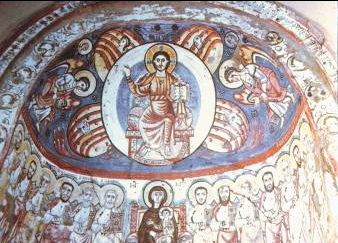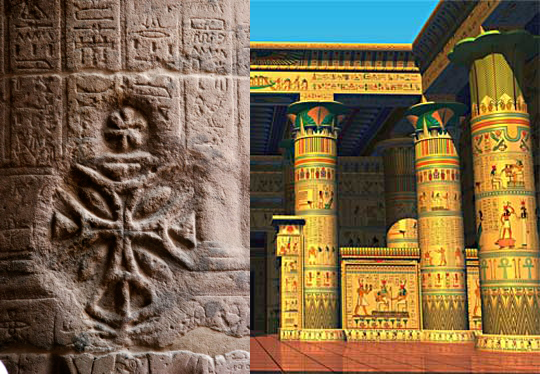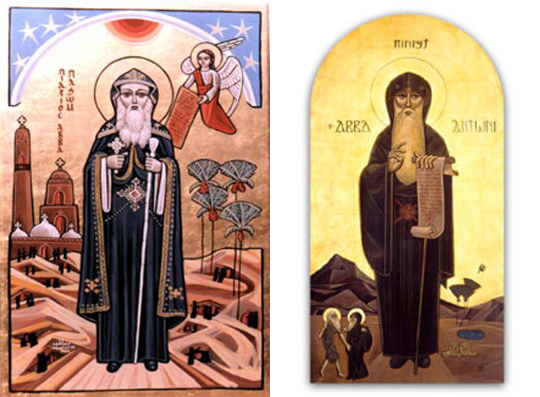 Coptic fresco from Bawit Monastery in Egypt, ca. 6th c. AD. Coptic fresco from Bawit Monastery in Egypt, ca. 6th c. AD. |
Coptic Chant: Gift of the Desert Fathers
Coptic chant may well be the oldest surviving member of the plainchant family. Although it is now used for Christian worship, it inherits many features from the temple rites of ancient Egypt.

Pagan priests continued worshipping the goddess Isis at Philae, on Egypt’s southern frontier, until AD 535, when the Byzantine Emperor Justinian I ordered them to stop. Above left is a Coptic cross carved into pagan heiroglyphs at the Temple of Isis at Philae. Above right is a digital reconstruction of the temple in its hey-day.
The Desert Fathers who founded the first Christian monasteries in Egypt would have been intimately familiar with Egyptian plainchant. Pagan worship continued in Egypt until it was outlawed by the Byzantine Emperor Justinian the Great in AD 535. During the five centuries when Christians and pagans worshipped side by side on the Nile, there seems little doubt that Egypt’s ancient temple rites exerted an influence over Christian music.

The Coptic icons above portray St. Pachomios the Great (circa 292-346 AD), above left, and, above right, St. Anthony of Egypt, founder of monasticism and greatest of the Desert Fathers. St. Pachomios is credited with making the first prayer rope or Komboskini, a possible precursor of today’s Catholic Rosary.
The language of Coptic chant is a late form of Egyptian, a direct descendant of the language spoken by the pharaohs. Long after the Arab invasion of AD 639, Egyptian Christians resisted Arab influence, and continued speaking their native tongue, which came to be known as “Coptic”, after the word Qubt or Qibt, which the Arab conquerors used to describe their Egyptian subjects. Coptic died out as a spoken language in the 1600s. It is still used, however, in the worship services of Egypt’s Coptic Church.
To hear a typical Coptic chant, play the audio file below:
Courtesy Agpeya.org
Coptic Music, Wikipedia.org